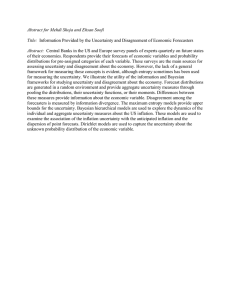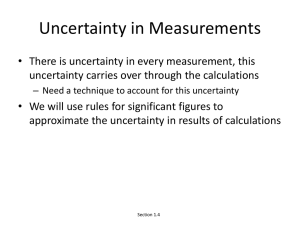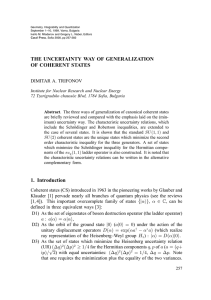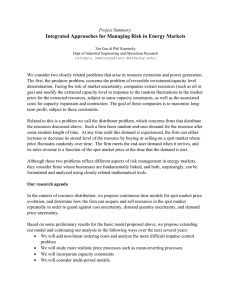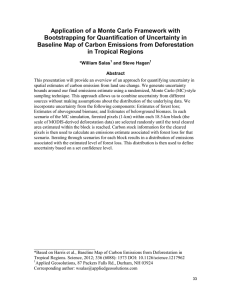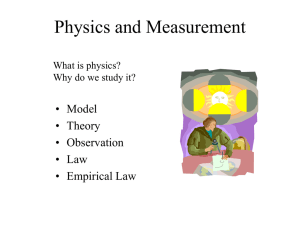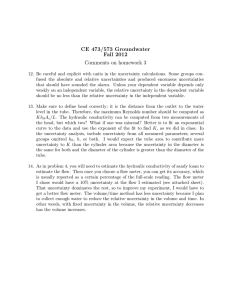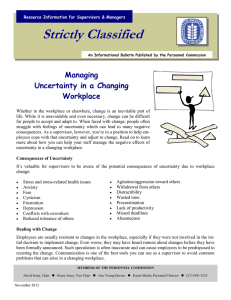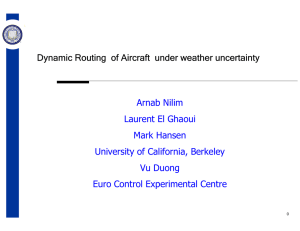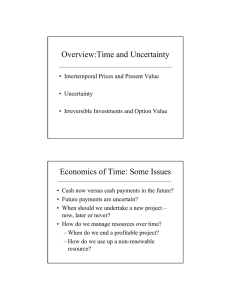Introduction to Services and Service Operations
advertisement
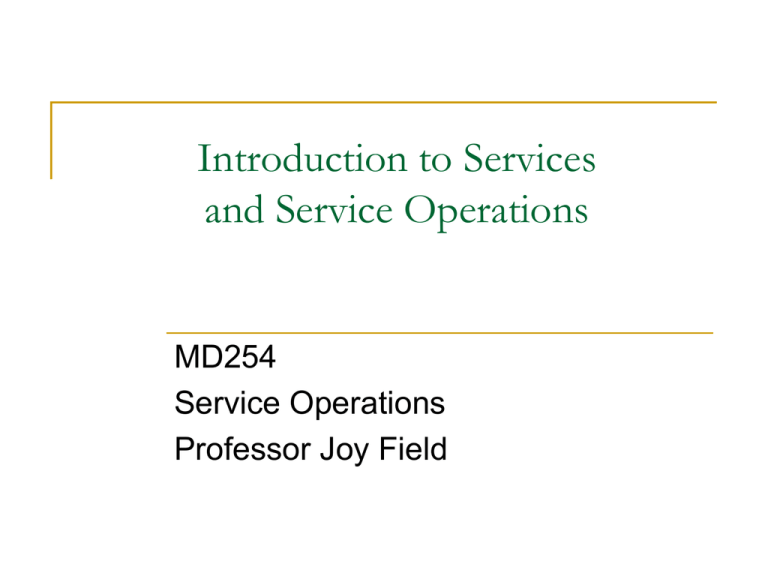
Introduction to Services and Service Operations MD254 Service Operations Professor Joy Field Percent Employment in Services Top Ten Postindustrial Nations Country 1965 1975 1985 1995 2005 United States 59.5 66.4 70.0 74.1 78.6 United Kingdom 51.3 58.3 64.1 71.4 77.0 The Netherlands 52.5 60.9 68.3 73.4 76.5 Sweden 46.5 57.7 66.1 71.5 76.3 Canada 57.8 65.8 70.6 74.8 76.0 Australia 54.6 61.5 68.4 73.1 75.8 France 43.9 51.9 61.4 70.0 74.8 Japan 44.8 52.0 57.0 61.4 68.6 Germany 41.8 n/a 51.6 60.8 68.5 Italy 36.5 44.0 55.3 62.2 65.5 Definitions of Service Services are economic activities offered by one party to another, most commonly employing time-based performances to bring about desired results in recipients themselves or in objects or other assets for which purchasers have responsibility. In exchange for their money, time, and effort, service customers expect to obtain value from access to goods, labor, professional skills, facilities, networks, and systems; but they do not normally take ownership of any of the physical elements involved. (Christopher Lovelock and Lauren Wright) A service is a time-perishable, intangible experience performed for a customer acting in the role of a coproducer. (James Fitzsimmons) Role of Services in an Economy FINANCIAL SERVICES · Financing · Leasing · Insurance MANUFACTURING Services inside company: · Finance · Accounting · Legal · R&D and design BUSINESS SERVICES · Consulting · Auditing · Advertising · Waste disposal INFRASTRUCTURE SERVICE · Communications · Transportation · Utilities · Banking DISTRIBUTION SERVICES · Wholesaling · Retailing · Repairing PERSONAL SERVICES · Healthcare · Restaurants · Hotels CONSUMER (Self-service) GOVERNMENT SERVICES · Military · Education · Judicial · Police and fire protection Sources of Service Sector Growth Information Technology (e.g. Internet) Innovation Push theory (e.g. Post-it) Pull theory (e.g. Cash Management) Services derived from products (e.g. Netflix) Exploiting information (e.g. Auto part sales) Difficulty of testing service prototypes Changing Demographics Aging of the population Two-income families Growth in number of single people Home as sanctuary Key Operations Principles Aggregation Principle Uncertainty Principle The higher the level of aggregation of resources and information, the more predictable operations becomes (e.g. forecasts of total resources needed tend to be more accurate than forecasts of individual resources). This is a manifestation of the Central Limit Theorem. The more uncertainty in operations, the greater the need to employ extra resources to cope with this uncertainty. Alternatively, the greater the stability and predictability, the more efficiently operations can function. Efficiency Principle All else being equal, operations should function as efficiently as possible. Distinctive Characteristics of Services Customer participation in the service process: attention to facility design, opportunities for co-production, concern for customer and employee behavior Simultaneity: process and outcomes are coupled, customerfacing activities cannot be inventoried, increased importance of matching capacity to demand Perishability: opportunity loss of idle capacity, capacity utilization is a significant managerial challenge due to variable customer demand and lack of inventory for absorbing fluctuations Intangibility: customers cannot assess quality a priori, importance of reputation Heterogeneity: customer involvement in delivery process results in variation in service from customer to customer Compared to manufacturing, these characteristics introduce more uncertainty into the operating system with fewer options for managing uncertainty and create an operational focus on managing the customer experience throughout the service delivery process. Service Package The service package is a bundle of goods and services with information that is provided in some environment. The bundle consists of: Supporting Facility: The physical resources that must be in place before a service can be sold. Examples are golf course, ski lift, hospital, airplane. Facilitating Goods: The material consumed by the buyer or items provided by the consumer. Examples are food items, legal documents, golf clubs, medical history. Information: Operations data or information that is provided by the customer to enable efficient and customized service. Examples are patient medical records, seats available on a flight, customer preferences, location of customer to dispatch a taxi. Service Package (cont.) Explicit Services: Benefits readily observable by the senses. The essential or intrinsic features. Examples are quality of meal, attitude of the waiter, on-time departure. Implicit Services: Psychological benefits or extrinsic features which the consumer may sense only vaguely. Examples are privacy of loan office, security of a well lighted parking lot. Open Systems View of Services Service process Consumer arrivals Consumer participant Consumer-provider interface (inputs) Consumer departures (output) Control •Production function: Monitor and control process Alter demand •Marketing function: Interact with consumers Control demand Service personnel Schedule supply Modify as necessary Define standard Service package Communicate by advertising Supporting facility Facilitating goods Information Explicit services Implicit services Criteria Measurement Monitor Service operations manager Consumer demand Perceived needs Location Evaluation Basis of selection Empowerment Training Attitudes










